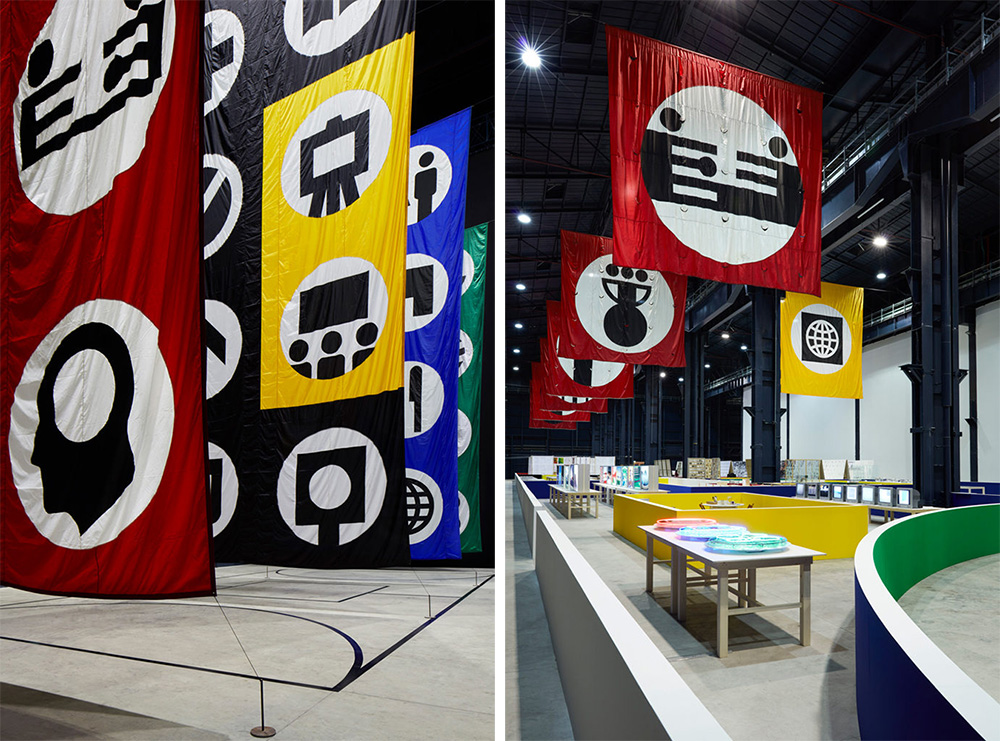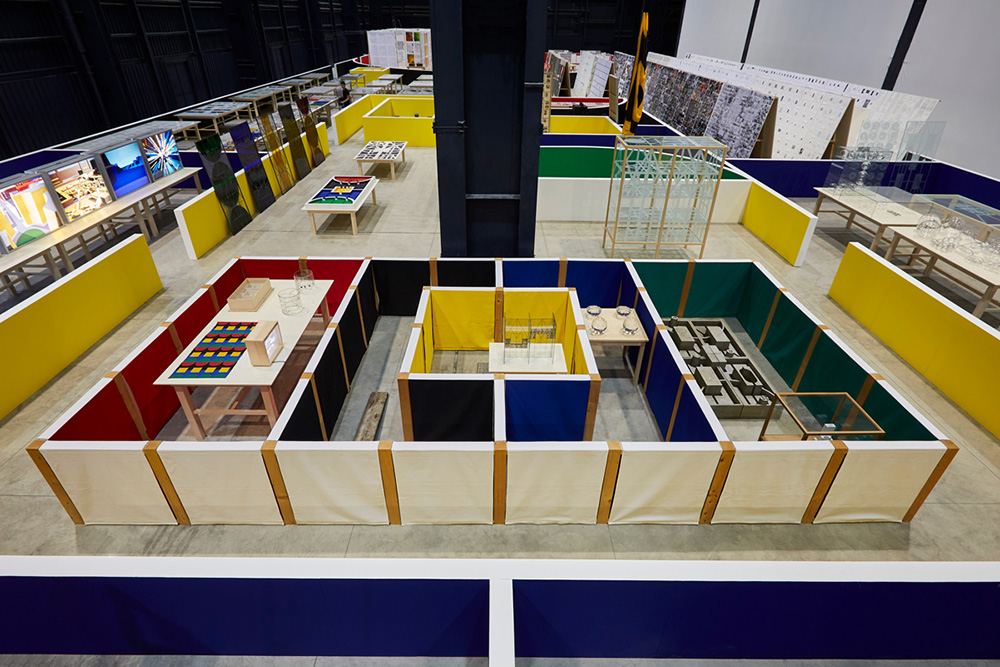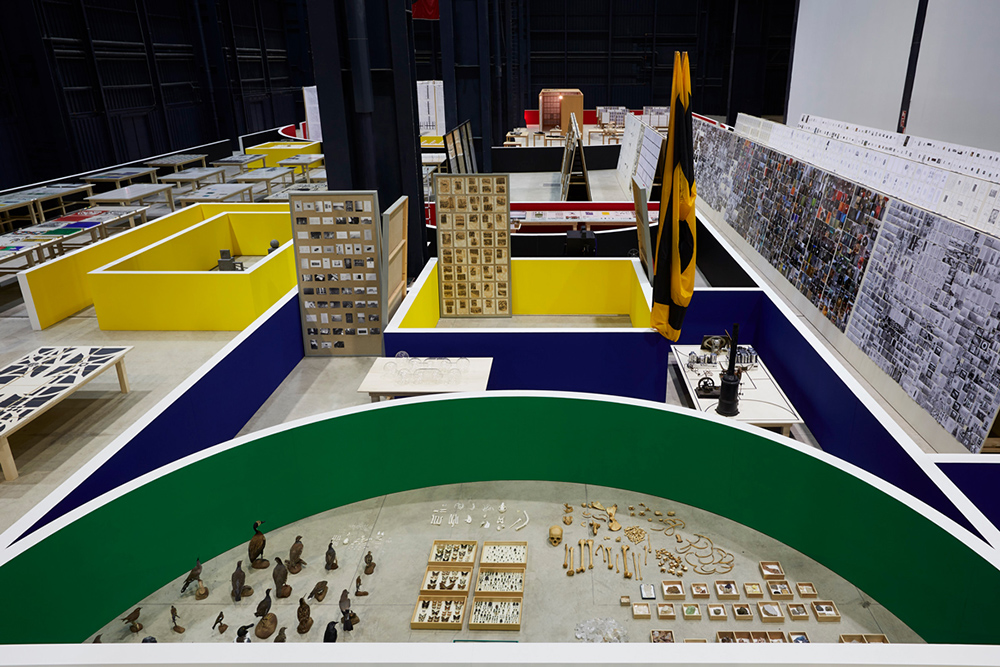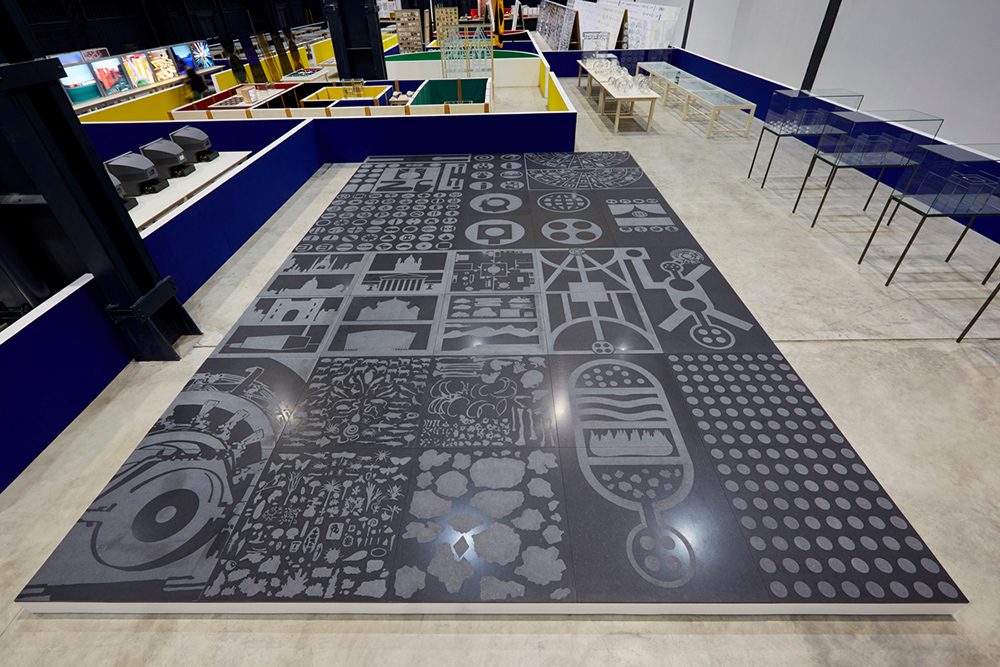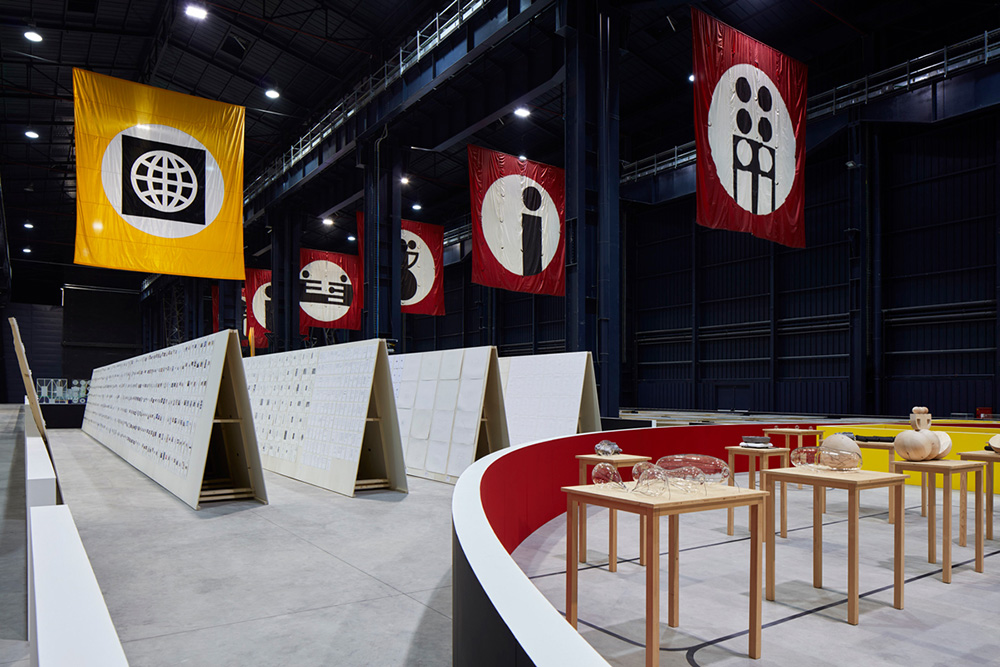ART CITIES:Milan-Matt Mullican
 Active since the early 1970s, Matt Mullican is one of the leading figures on the International Art Scene, a pioneer in the use of hypnosis in contemporary art. His work is an incessant probing of the relations between reality and perception, in his ongoing attempt to explain and give a structure to every aspect of the human condition.
Active since the early 1970s, Matt Mullican is one of the leading figures on the International Art Scene, a pioneer in the use of hypnosis in contemporary art. His work is an incessant probing of the relations between reality and perception, in his ongoing attempt to explain and give a structure to every aspect of the human condition.
By Efi Michalarou
Photo: Pirelli HangarBicocca Archive
“The Feeling of Things” is the most comprehensive retrospective of Matt Mullican’s work ever staged, featuring his most iconic works created between the early 1970s and the present day is on presentation at Pirelli HangarBicocca. The visitor is welcomed to the exhibition by four colored banners arranged as a single large structure to be explored: a colossal version of The M.I.T. Project devised by the artist in the 1990s. Divided into five areas, each distinguished by a color. The exhibition features more than 6,000 items: readymades and new productions, spanning from banners, works on paper, and videos, to lightboxes, sculptures, and large installations. Four banners are installed in the Piazza of Pirelli HangarBicocca preceding the exhibition narrative, beyond them lies the massive architectural structure of the exhibition display. The Red Area of the exhibition presents a series of works that explore the most remote wanderings of the psyche and subjectivity. In particular, alongside a series of glass pieces that represent the artist’s cosmology, Mullican introduces the figure of That Person, an ageless, asexual entity that, commencing in the 1990s, surfaced as the artist’s alter ego during his performances under hypnosis, a practice that he has employed as an artistic medium since the late 1970s to explore inner space and everything that is not visible to the physical eye. During these events he initiated a mental journey, exploring an image of a figurative work and giving the audience in front of him a detailed description of the creative process, leaving the imagination free to create virtually and go beyond that which is objectively visible in the work examined. Subsequently, with the aid of a hypnotist who would induce him into a deep trance, Mullican presented a series of performances in which he measured himself with the deepest part of his unconscious. In a state of hypnosis, he claimed to be a different person and was under the influence of That Person, who created works in a trance. The exhibition continues with Black Area focusing on the theme of communication and language. A series of tables and bulletin boards display a collection of works on paper tracing the artist’s entire production from the 1970s to the present day, the section presents some of the most significant works of his early career, dating from 1973 and 1974, which subsequently became the master plate for the ideas that the artist would elaborate over the following years. In the series of collages based on comics titled “Details from a Fictional Reality” (1973) and “Details from an Imaginary Universe” (1973), Mullican explores the details of a reality that transcends the physical world and exists solely as a mental construct, imagining its existence in a parallel world, for example inside a picture. Starting with cuttings from comics, which show details of a reality recounted in a story, the artist imagines the life of the characters or the objects before they become part of the actual story: penetrating these images becomes a way of under-standing the objective meaning of things. In the Yellow Area the artist investigates the world of art, science, and culture, installing a series of works in different formats and media, which echoes the structure of the entire exhibition, as if we were in a huge kaleidoscope. It includes “The M.I.T. Project” (1990), a crucial work for the definition of the exhibition narrative, which marks the transition from the symbolic depiction of the world to the display of reality itself, with objects and materials of various kinds arranged in a predetermined order. Inside the structure, the objects are in turn arranged in five interconnecting areas, or five levels of meaning. The different levels of perception, are also rep-resented by the five colors (green for material and primary objects, associated with natural elements; blue to represent everyday life, the city, and also nature; yellow in the middle to represent the arts and sciences; black for language, while the semicircle of red walls represents the level of pure meaning and the spiritual. Devoted to the world of everyday life, the Blue Area is composed of a series of works focusing on the theme of the city. From the 1980s onwards, the artist expanded his cosmological diagrams (Charts) to comprise the map of a fictitious city, with both general views and details of buildings. Using the map of a city Mullican arranged his conceptual model within an ideal and well-ordered space. Also on presentation is a series of films and videos by the artist, from the earliest films in Super 8 format shot in the 1970s, to the famous “Elevated” (2005). In the Green Area, which in Mullican’s cosmology represents the natural world of matter and the elements. Here the artist displays a selection of his works on the theme, such as the Melted Objects, along with a series of readymades, like machines and prototypes connected to steam and electricity production, but also bones, stuffed animals, seeds, insects, rocks, and minerals, which are among his favorite subjects and recur in many of his paintings and works on paper. The exhibition ends in the separate area of the Cubo, which is literally covered with Mullican’s rubbings, a medium whose very nature refers to the master plate that it reproduces. First made in 1984, they have since become a constant feature of the artist’s investigations. The walls of the Cubo are completely covered with over 70 rubbings, among which the “Dallas Project (/Third Version)” (1987) composed of 416 black and white pages and contains Mullican’s entire cosmology, from the signs that represent heaven, God, life before birth, fate, destiny, death, and so on, to the world of communication or that of technology.
Info: Curator: Roberta Tenconi, Pirelli HangarBicocca, Via Chiese 2, Milan, Duration: 12/4-16/9/18, Days & Hours: Thu-Sun 10:00-22:00, www.hangarbicocca.org


